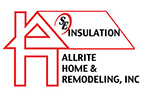Getting the most from your money in any home renovation project originates from knowledge of the improvement process and hiring the right contractor. With our tough-as-nails tactics guide, you can assure yourself that your home project has the expected outcome.
Do some research.
Whether you're about to renovate the interior or exterior of your home, it may help to know what you want before setting your first appointment. Are you looking for a modern or more classic design? What is your budget? What kind of materials do you think you will need? Attending local expos and fairs is a good way to see the latest products all at once from a variety of vendors. Do you have an idea of what you want to update or change in your home? Are you looking for more traditional neutral colors or something bold that makes a statement? Having an idea of what you want helps route the contractor to the type of work and look you have in mind.
Know your insurance.
If you have checked out your contractor's references and history you know that you will be dealing with someone with integrity who is ready to help with any issue involved in your project. Most homeowner insurance policies will provide coverage for damage to roofs, siding, windows, doors and other parts of the home depending on the cause. It is also best to check your coverage. You may find that your insurance covers most of, if not all of, the costs involved if there was some damage done.
What are the terms?
A contract is rarely a take-it-or-leave-it proposition. Read your contract carefully and discuss any concerns you have with your contractor before starting. Remember a good contractor will be willing to sit down with you and thoroughly review all aspects of a service contract and provide satisfactory answers. If you are not confident about part of a contract, DO NOT SIGN IT. Instead, have someone else look it over for you as well. Remember that this is your money, your home, and the contractor is there to help you. Allrite Home & Remodeling's team members are always willing to discuss the details of every project to ensure that your renovation is stress free.
Hire the best.
The term "you get what you pay for" is never as valid as it is when dealing with a home renovation. Many people take short cuts hiring a friend of a friend only to find their project incomplete and a nightmare left behind. When checking out contractors for your home renovation you should look for these factors:
- Is the contractor licensed and insured?
- Does the contractor have a satisfactory rating with the Better Business Bureau?
- How long has the contractor been in business?
- Do they have a guarantee to satisfy the homeowners?
- Have they been awarded for previous work completed?
- Check for online reviews of the contractor.
A home renovation project can be stressful, but if you follow these few simple steps you may find that the project goes smoothly without a hitch. Remember that if a problem arises and you have done your due diligence in hiring a quality contractor, do not be afraid to speak up and talk to the contractor right away. He or she will help you to reach a fair and satisfactory conclusion to your concern.
Allrite Home & Remodeling is an accredited member of the Wisconsin BBB. To see our ratings or leave us a review, please visit our BBB link here: Allrite Home & Remodeling BBB Ratings




